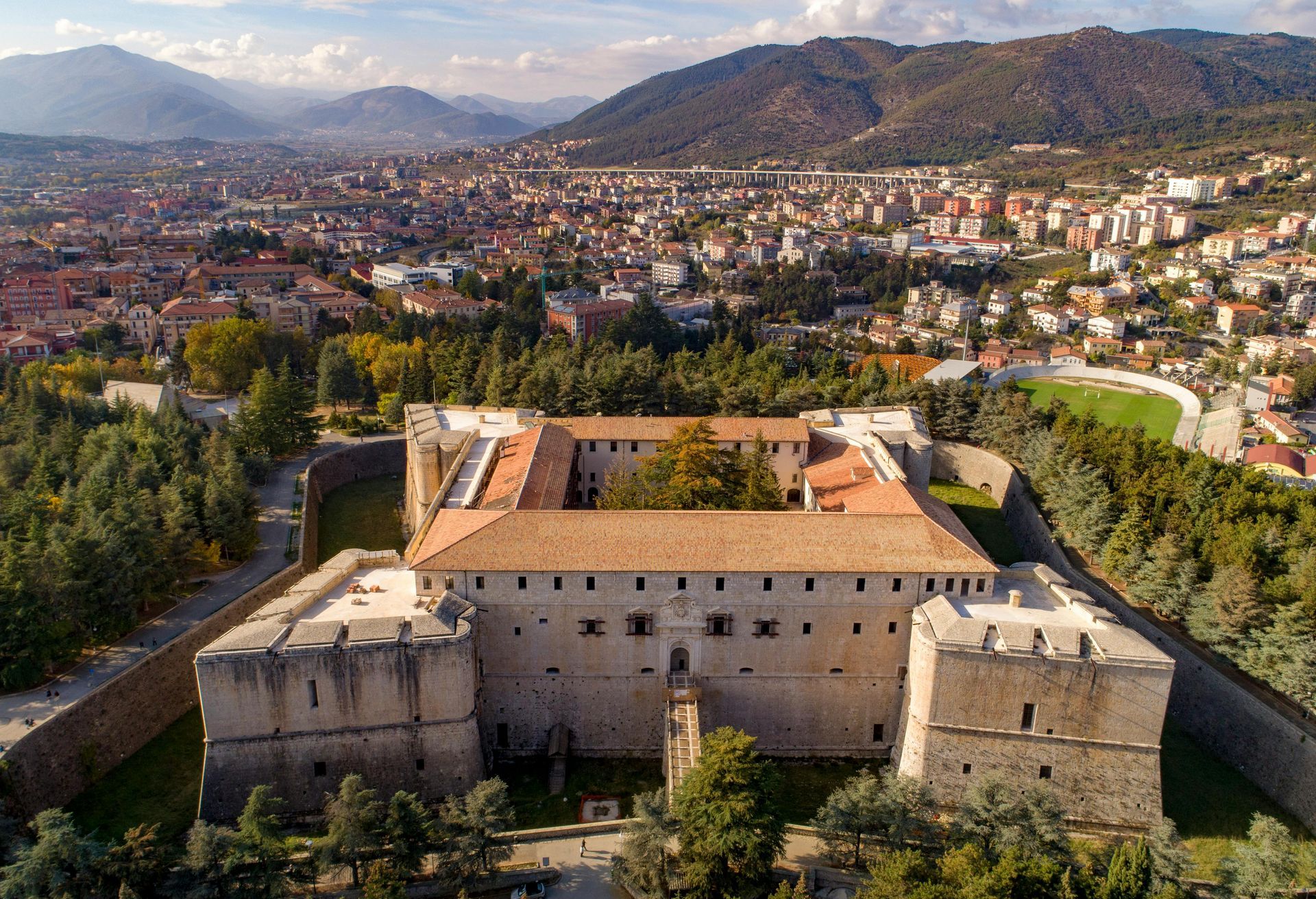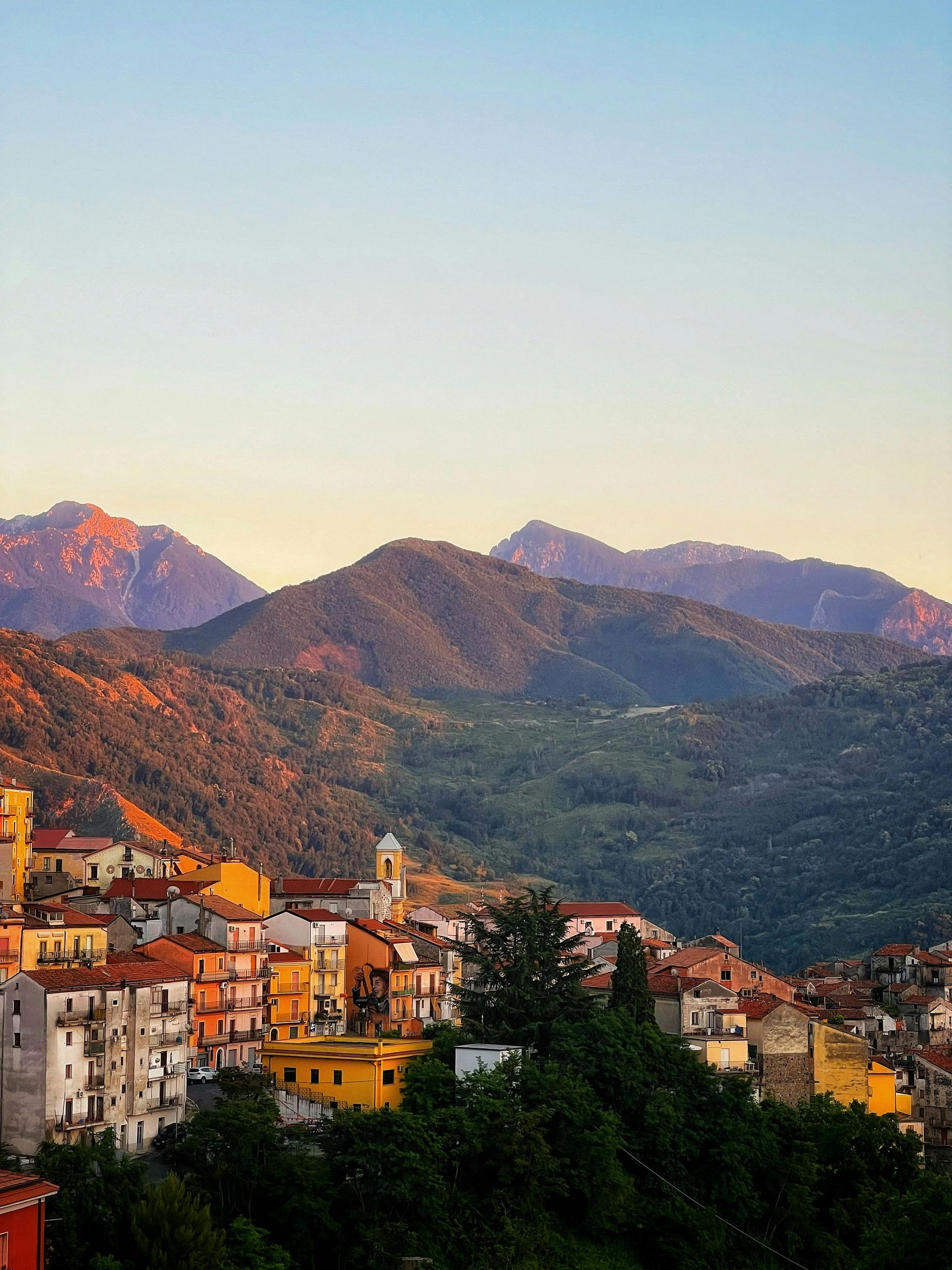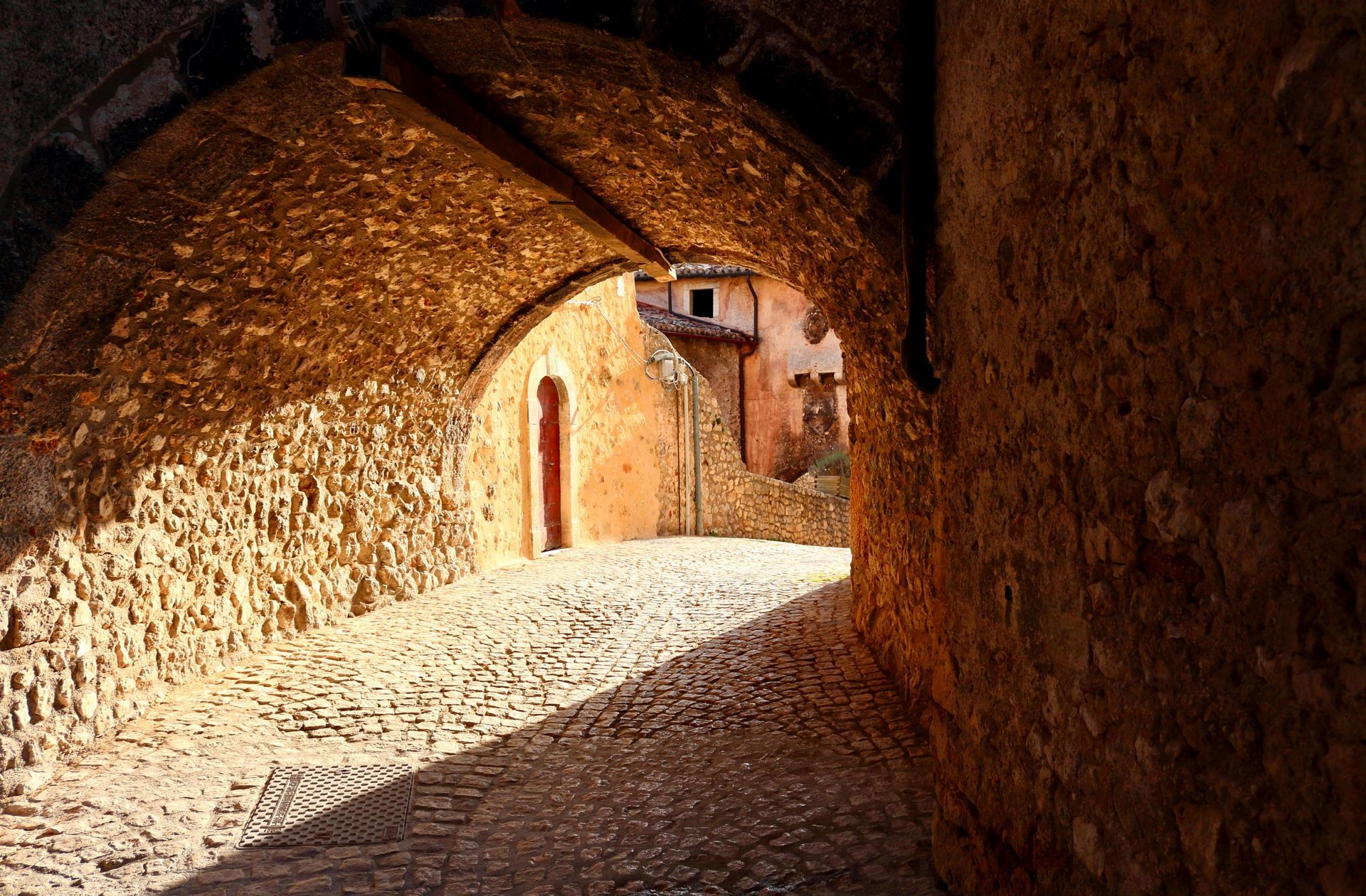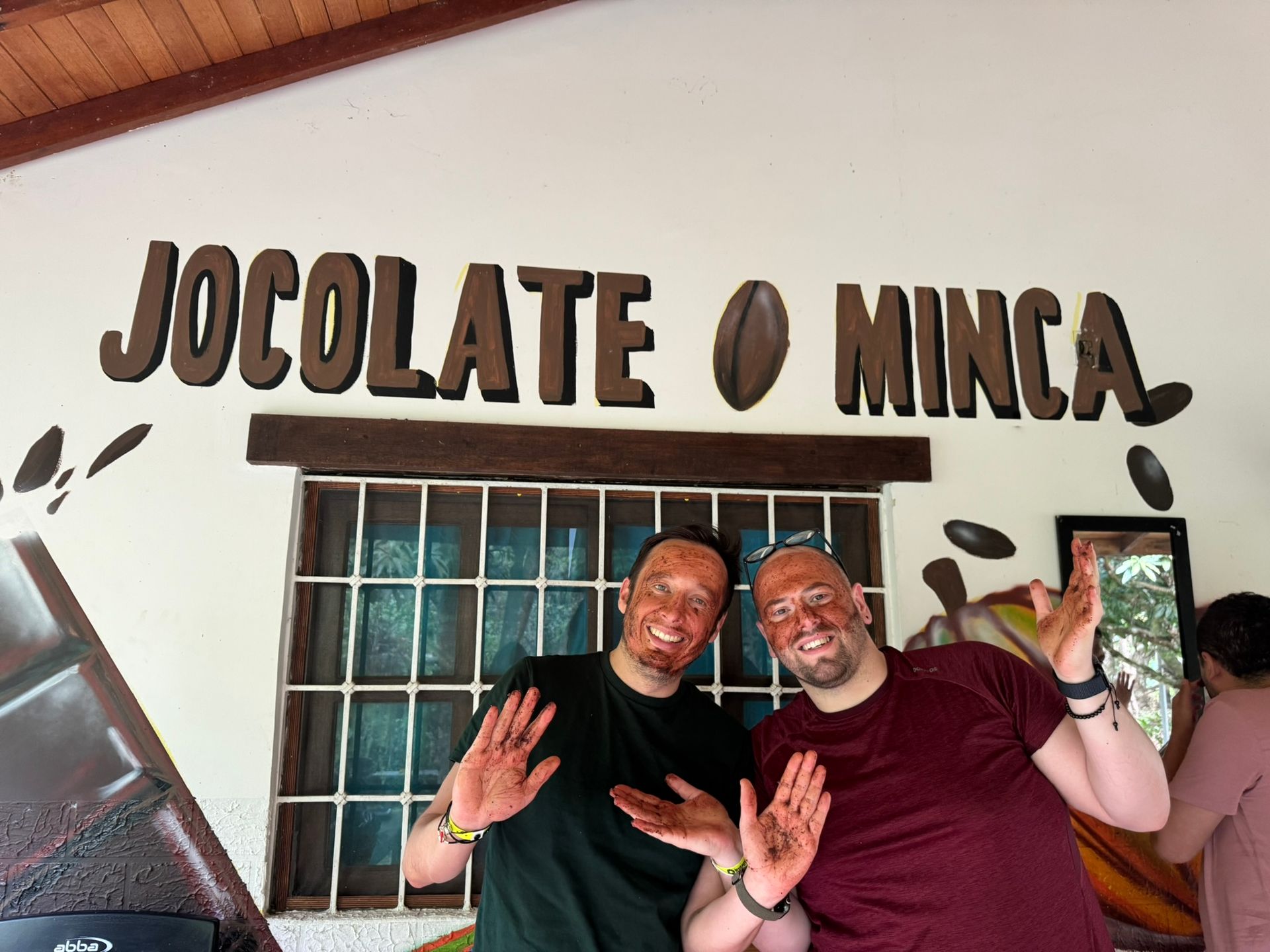Abruzzo's Living Heritage: Where Ancient Crafts Meet Modern Culinary Excellence
Discover how traditional artisans and innovative chefs in Abruzzo preserve cultural heritage while creating contemporary experiences that honor the past
In Abruzzo's workshops and kitchens, time moves differently. Here, master craftsmen shape gold with techniques unchanged since the Renaissance, while innovative chefs transform ancient recipes into contemporary masterpieces. This isn't nostalgia disguised as tourism—it's living culture that continues evolving while honoring traditions passed down through countless generations. For conscious travelers seeking authentic experiences, Abruzzo offers the rare opportunity to witness and participate in cultural practices that remain genuinely connected to place and community.
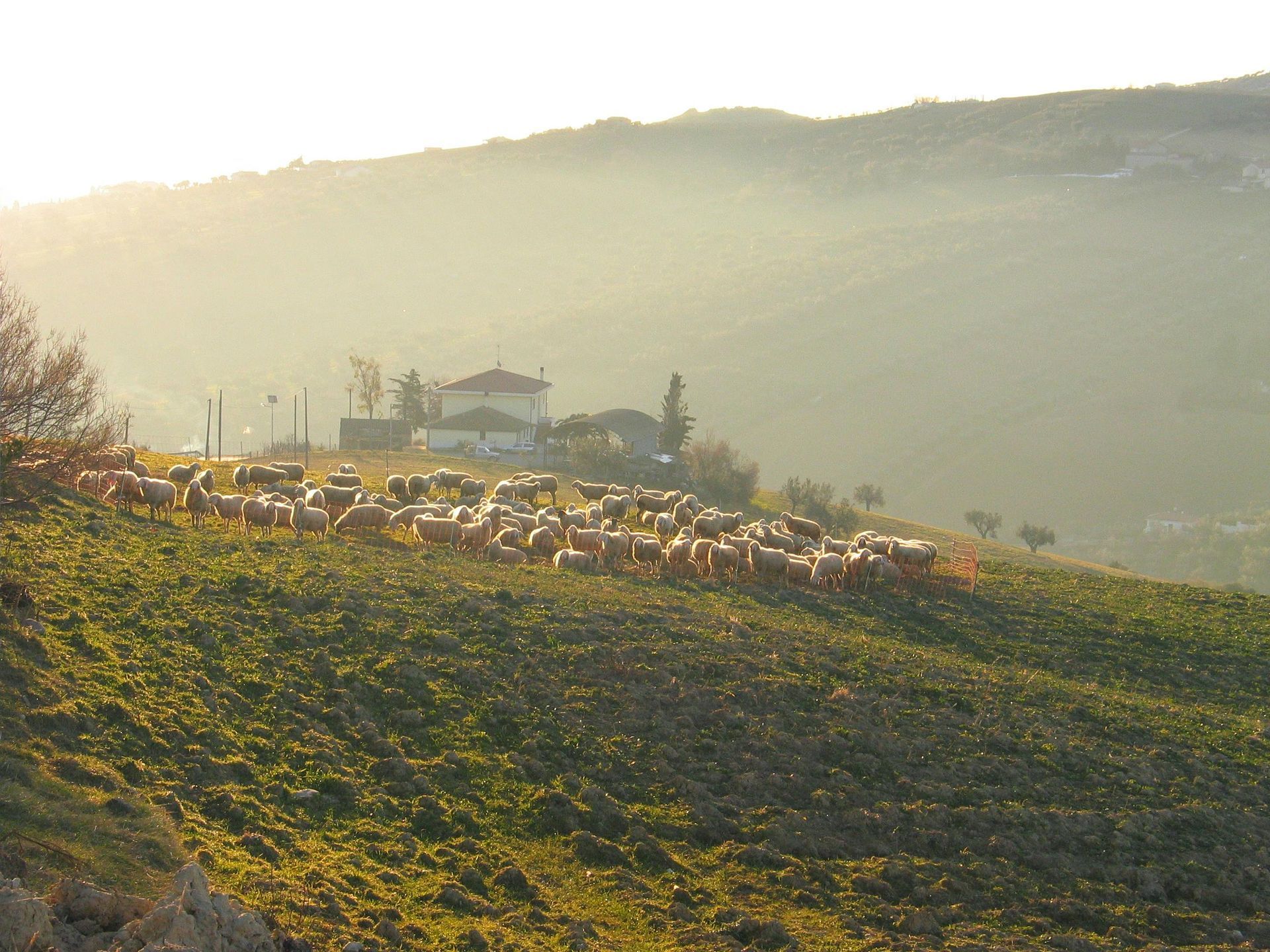
The Golden Threads of Scanno
In the narrow streets of Scanno, the sound of hammering metal echoes from workshops where goldsmiths create the intricate "presentosa"—elaborate pendants that represent one of Italy's most sophisticated jewelry traditions. These aren't tourist trinkets but genuine cultural artifacts that local women still wear during festivals and celebrations, just as their great-grandmothers did centuries ago.
The presentosa's design reveals the complex symbolism that underlies traditional Abruzzese culture. Its star-shaped form incorporates Christian symbols with pre-Christian motifs, creating jewelry that functions as protective amulet, status symbol, and artistic expression. Each pendant requires weeks of hand-crafting, with techniques that master jewelers guard as family secrets.
Meeting these artisans provides insights into how traditional crafts survive in the modern world. Maestro Giuseppe D'Amico, whose family has worked gold in Scanno for seven generations, explains how tourism has actually helped preserve these traditions by creating markets for authentic craftsmanship. "Tourists want the real thing," he observes while shaping a delicate filigree pattern. "They can buy machine-made jewelry anywhere, but they come here for pieces that carry our history."
The workshops themselves are cultural institutions. Apprentices learn not just technical skills but the stories, symbols, and social contexts that give meaning to their work. This knowledge transmission occurs through daily practice rather than formal instruction, creating deep understanding that connects contemporary artisans to their cultural inheritance.
Guardiagrele: Where Iron Becomes Art
Guardiagrele's blacksmiths transform raw metal into objects of extraordinary beauty, continuing traditions that made this small city famous throughout medieval Europe. The workshop of Nicola da Guardiagrele produced masterpieces that still adorn churches across central Italy, establishing a reputation for excellence that contemporary artisans work to maintain.
Modern Guardiagrele smiths create everything from architectural elements to culinary tools, each piece reflecting the aesthetic principles that have defined Abruzzese metalwork for centuries. The town's narrow streets harbor workshops where sparks fly and hammers ring as craftsmen shape iron, copper, and bronze into functional art that bridges past and present.
Visiting these workshops during the annual Settimana Europea dei Mestieri d'Arte (European Crafts Week) provides opportunities to observe master artisans at work while learning about the cultural significance of their crafts. Demonstrations reveal how traditional tools and techniques produce results that modern machinery cannot replicate, while discussions with craftsmen illuminate the philosophical approaches that guide their work.
The relationship between function and beauty in traditional Abruzzese metalwork reflects deeper cultural values about the integration of art and daily life. These artisans don't separate aesthetic considerations from practical requirements; instead, they create objects where beauty emerges from perfect adaptation to purpose. This philosophy influences contemporary designers who study traditional techniques to develop modern applications.
Pescocostanzo: Lace and Stone in Harmony
Pescocostanzo's reputation rests on two seemingly disparate crafts: delicate lace-making and monumental stone carving. Both traditions reflect the same attention to detail and commitment to excellence that characterizes Abruzzese artisanship. The town's workshops preserve techniques that require years to master and lifetimes to perfect.
The local lace, known as "merletto a tombolo," creates patterns of extraordinary complexity using techniques that arrived with Spanish nobles in the 16th century. Master lace-makers work with dozens of bobbins, following patterns that exist only in memory and muscle memory developed through decades of practice. Each piece takes months to complete, with designs that incorporate symbols specific to Abruzzese folk culture.
Stone carving in Pescocostanzo transforms local limestone into architectural details that have adorned the town's palaces and churches for centuries. Contemporary stone carvers continue these traditions, creating both restoration work for historical buildings and original pieces that adapt traditional motifs to modern needs. Their workshops occupy buildings that have housed craftsmen for generations, creating direct connections between past and present.
The town's Palazzo Fanzago houses a museum where visitors can observe both crafts in practice while learning about their historical development and cultural significance. Interactive demonstrations allow visitors to attempt these techniques themselves, gaining appreciation for the skill and patience required to achieve mastery.
Culinary Traditions: From Ancient Grains to Modern Tables
Abruzzo's culinary heritage encompasses both sophisticated restaurant cuisine and humble peasant dishes that transformed basic ingredients into satisfying meals. This dual tradition provides contemporary chefs with a rich vocabulary of flavors, techniques, and ingredients that support both innovation and preservation.
The region's pasta-making traditions exemplify this cultural continuity. In villages throughout Abruzzo, elderly women still hand-roll "maccheroni alla chitarra"—square spaghetti shaped using a guitar-like tool that creates the pasta's distinctive texture. This technique, which requires no machinery beyond a wooden frame strung with wire, produces pasta with superior sauce-holding properties that machine-made alternatives cannot replicate.
Contemporary restaurants like Reale in Castel di Sangro have achieved international recognition by elevating traditional Abruzzese ingredients and techniques to haute cuisine levels. Chef Niko Romito's approach demonstrates how modern culinary innovation can honor traditional foundations while creating entirely new experiences. His dishes might feature ancient grains grown in Abruzzo mountains, prepared using contemporary techniques that highlight their unique characteristics.
The Slow Food movement finds particularly fertile ground in Abruzzo, where small producers maintain varieties of vegetables, grains, and livestock breeds that have disappeared elsewhere. These ingredients tell stories about local adaptation to specific environments and demonstrate how traditional food systems supported both human nutrition and ecological diversity.
Saffron: Red Gold of the Navelli Plain
The Navelli Plain produces some of the world's finest saffron, continuing cultivation traditions that date to the 13th century when Spanish monks introduced this precious spice to Abruzzo soil. Today's saffron growers follow the same seasonal rhythms and hand-harvesting techniques that their ancestors developed, creating a product that commands premium prices in international markets while supporting local rural economies.
Saffron cultivation requires extraordinary patience and skill. Each flower produces only three stigmas, which must be harvested by hand during a brief window when morning dew keeps them fresh. A kilogram of saffron requires approximately 150,000 flowers, representing weeks of dawn-to-dusk labor during the October harvest season.
Visiting saffron farms during harvest provides insights into agricultural traditions that persist despite mechanization elsewhere. Entire families work together to process the crop, using techniques that cannot be mechanized without compromising quality. These experiences demonstrate how traditional agriculture creates products that reflect both place and cultural practice in ways that industrial farming cannot replicate.
Contemporary chefs throughout Italy seek Navelli saffron for its superior flavor and aroma, creating markets that support traditional cultivation methods. This demand demonstrates how culinary excellence can preserve agricultural heritage while providing sustainable livelihoods for rural communities.
Montepulciano d'Abruzzo: Terroir and Tradition
Abruzzo's wine culture reflects the same commitment to authenticity that characterizes the region's other artisanal traditions. Montepulciano d'Abruzzo, the region's flagship wine, demonstrates how traditional viticulture adapts to contemporary market demands while maintaining its distinctive character rooted in local terroir and generations of winemaking knowledge.
The grape variety Montepulciano thrives in Abruzzo's climate and soils, producing wines that express the region's personality through their robust character and food-friendly structure. Traditional producers like Masciarelli and Illuminati combine modern winemaking technology with vineyard practices that respect local environmental conditions and cultural traditions.
Visiting Abruzzo wineries during harvest season provides opportunities to participate in traditional grape-picking while learning about sustainable viticulture practices. Many producers welcome visitors for hands-on experiences that include grape stomping, barrel tasting, and meals featuring local ingredients paired with estate wines. These experiences demonstrate how wine production integrates with broader agricultural and cultural systems.
The region's wine routes connect producers with restaurants, agriturismi, and cultural sites, creating itineraries that showcase the relationships between viticulture, cuisine, and landscape. These routes emphasize slow travel approaches that allow visitors to understand how wine culture influences and reflects broader aspects of Abruzzese identity.
Cheese-Making in the Mountains
Abruzzo's mountain pastures produce milk that local cheese-makers transform into products that rival the finest European artisanal cheeses. Traditional producers continue using techniques that create unique flavors impossible to replicate in industrial facilities, while aging cheeses in natural caves that provide ideal environmental conditions.
Pecorino di Farindola represents the pinnacle of Abruzzese cheese-making, using pig rennet instead of the calf rennet used for most cheeses. This unusual technique, maintained by only a few producers, creates distinctive flavors that reflect both traditional knowledge and adaptation to local resources. The cheese's production involves entire communities during specific seasons, demonstrating how food traditions create social cohesion.
Cave-aged cheeses from producers near Anversa degli Abruzzi benefit from natural aging environments that cannot be artificially replicated. These caves maintain constant temperatures and humidity levels while introducing beneficial molds that develop complex flavors over months or years of aging. Visiting these facilities provides insights into how traditional food production utilizes natural resources to create superior products.
Contemporary chefs seek these artisanal cheeses for their unique characteristics and connection to place. The demand supports traditional production methods while encouraging innovation in presentation and pairing. This market demonstrates how culinary excellence can preserve agricultural heritage while providing sustainable livelihoods for mountain communities.
Preserving Knowledge Through Practice
Abruzzo's craftsmen and food producers face the challenge of transmitting traditional knowledge to younger generations in a rapidly changing world. Many have developed innovative approaches that combine traditional apprenticeship methods with contemporary educational techniques, ensuring that cultural knowledge survives while adapting to modern circumstances.
Workshops and cooking schools throughout the region offer intensive programs where visitors learn traditional techniques directly from master practitioners. These programs go beyond simple instruction to include cultural context, historical background, and philosophical approaches that give meaning to traditional practices. Participants often form lasting relationships with local artisans and producers, creating networks that support continued cultural exchange.
The integration of traditional knowledge with contemporary applications creates opportunities for innovation that honors cultural foundations while meeting modern needs. Young artisans develop new products using traditional techniques, while chefs create contemporary dishes that showcase traditional ingredients. This creative adaptation ensures that traditions remain vital rather than becoming museum pieces.
Documentation projects record traditional techniques and knowledge while they remain actively practiced. These efforts often involve collaboration between local practitioners and outside researchers, creating resources that support both cultural preservation and educational programs. Digital technologies enhance these projects by making traditional knowledge accessible to broader audiences while supporting local tourism development.
Economic Impact of Cultural Tourism
The preservation and promotion of traditional crafts and culinary practices create significant economic benefits for Abruzzo communities while supporting cultural continuity. Artisanal products command premium prices that make traditional production methods economically viable, while cultural tourism brings visitors whose spending supports entire local economies.
Certification programs for traditional products help producers access premium markets while guaranteeing authenticity for consumers. These programs often involve cooperation between producers, local governments, and cultural organizations, creating networks that support both quality maintenance and market development.
Educational tourism focused on traditional crafts and cuisine attracts visitors who spend more time and money in destinations while seeking meaningful experiences. These tourists often purchase artisanal products, stay in local accommodations, and eat at traditional restaurants, creating economic multiplier effects that benefit entire communities.
The success of cultural tourism in Abruzzo demonstrates how authenticity itself becomes a valuable economic resource. Communities that maintain genuine traditional practices can leverage their cultural heritage for sustainable economic development while preserving the knowledge and skills that make such development possible.
Seasonal Rhythms and Cultural Celebrations
Abruzzo's traditional crafts and culinary practices follow seasonal rhythms that reflect deep connections between human culture and natural cycles. Understanding these patterns enhances visitor experiences while demonstrating how traditional societies developed sustainable relationships with their environments.
Spring brings sheep shearing and cheese-making activities that involve entire communities in traditional practices. Visitors during this season can observe how pastoral traditions create products while maintaining social relationships and environmental stewardship. These activities often culminate in festivals that celebrate community accomplishments while showcasing traditional foods and crafts.
Summer harvest seasons for various crops provide opportunities to participate in traditional agricultural practices while learning about plant varieties and cultivation techniques specific to Abruzzo environments. Many producers welcome visitors for hands-on experiences that include harvesting, processing, and preparing traditional foods using time-tested methods.
Autumn grape and saffron harvests create intense periods of community activity where traditional knowledge and social cooperation prove essential for success. Participating in these harvests provides insights into how traditional agriculture requires community coordination and environmental knowledge that industrial farming often ignores.
Winter craft production utilizes seasonal downtime for creating objects that will be used or sold throughout the following year. Workshop visits during this season reveal how artisans use seasonal rhythms to organize their work while maintaining quality standards that require patient attention to detail.
The Future of Traditional Knowledge
Abruzzo's success in preserving and promoting traditional crafts and culinary practices provides models for other regions seeking to maintain cultural heritage while developing sustainable tourism. The key lies in understanding that authenticity cannot be manufactured but must be maintained through continued practice and adaptation.
Young entrepreneurs increasingly recognize traditional knowledge as valuable intellectual property that can support innovative business development. They create enterprises that honor traditional foundations while developing contemporary applications, ensuring that cultural knowledge remains economically viable and socially relevant.
International interest in authentic experiences creates markets for traditional products and cultural tourism that support preservation efforts while encouraging innovation. These markets reward quality and authenticity over mass production, creating economic incentives for maintaining traditional practices.
Climate change and globalization create new challenges for traditional practices that depend on specific environmental conditions and local knowledge systems. However, these same challenges create opportunities for communities that maintain adaptive capacity through traditional knowledge and strong cultural institutions.
Educational institutions increasingly recognize traditional knowledge as valuable complement to formal academic learning. Partnerships between universities and traditional practitioners create research opportunities that document cultural practices while developing applications for contemporary challenges.
Abruzzo's living heritage demonstrates that traditional cultures can thrive in the modern world when they maintain authenticity while adapting to contemporary circumstances. For visitors seeking meaningful engagement with cultural traditions, the region offers opportunities to learn from master practitioners while supporting the communities that preserve these invaluable expressions of human creativity and adaptation. In an era of mass production and cultural homogenization, Abruzzo's artisans and food producers remind us that the human hand, guided by traditional knowledge and cultural values, can create objects and experiences that connect us to place, community, and our shared cultural inheritance.
Experience authentic Abruzzese crafts and culinary traditions with master artisans and producers who share their knowledge while preserving cultural heritage. Join immersive workshops that support traditional practices while creating lasting memories and meaningful connections to place and community.
